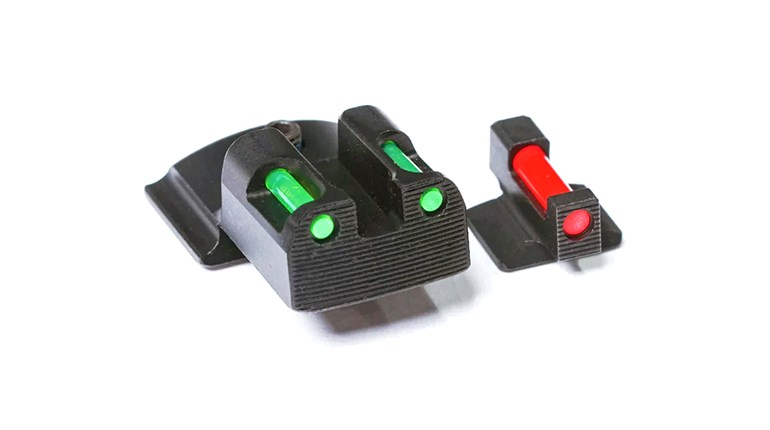
Adjusting “drift-adjustable” rear pistol sights while at the range has been problematic at best, as we typically need a vise mounted on a work bench for the task. But the Rear Sight Tool is a compact, eminently transportable device made for the range—which is where we really need it to make sight adjustments while shooting. And there’s no hammer needed.

Sleeper?
I found the Rear Sight Tool (RST) at SHOT Show 2020, way up on the fourth floor of Las Vegas’ cavernous Sands Expo Center, where they tucked away all the small exhibitors they couldn’t fit anywhere else. Some of these entrepreneurs have been waiting years to get a spot at SHOT, and they were eager to show off their wares. In an unpretentious booth presenting little more than a small sign and a young man sitting behind a nearly empty tabletop display, the RST sight pusher caught my attention. As I talked with the young man, engineer Eneko Gomez, and examined the tool, I realized I’d found a real sleeper in the RST—if it worked.
Eneko shipped me an RST for testing in January; after working with it the past five months I can report that it does, indeed, work very well. But any quality tool only works correctly when it is used properly, and this is especially true of the RST. Whereas other pistol rear sight “pushers” are heavyweight and employ brute force (which is what makes a vise and a work bench necessary), the rather spindly RST engages engineering and finesse, requiring no brutes—which is what makes it so portable.
Also, unlike the brute force types, I never had to put an assisting wrench on the drift screw knobs, and it isn’t necessary to remove the slide from the pistol for adjustment—making range adjustments with the RST less of a hassle. The lone exception is the Springfield Armory XD pistol, which has a reputation for the factory installing sights insanely tight, and the angled sides of the slide don’t help matters. Moving the rear sight on this pistol required mounting the slide in a bench vise and layering masking tape over the sides. The XD was the toughest test of the RST.
Clever and compact
Instructions in the booklet accompanying the RST are very clear, as are the illustrations. The tool is basically a clamp consisting of two plates and two tightening screws. Once clamped firmly to the pistol slide, a drift screw with a selection of “pushing heads” abuts the pistol sight, and turning the screw moves the sight. The pushing heads have different angles to match up with straight or angled sides of rear pistol sights. A reversible spacer block permits installing sights from left or right, and a guiding clip indicates whether the drift screw is moving precisely in axis with the sight’s dovetail. Plus, it all comes apart and can literally fit in a pants pocket.

Front sights, too
In the shop and at the range, the RST adjusted, removed and installed every pistol rear sight on which I employed it, including 1911s, S&W M&P, SIG Sauer, Taurus and Glock pistols. For the latter, the tool includes a “standard” Glock sight pushing head and another head specific to the Glock G42 and G43 models. RST literature says the tool will also work for many models of pistols from 20 different manufacturers. It also worked to very handily remove and install pistol dovetail front sights.
Not just for gunsmithing shops, the RST is appropriate for every pistol shooter who ever wanted to nudge drift-adjustable pistol sights while shooting at the range. Consider also that installing or adjusting tritium night sights requires a sight pusher, as the blows from a hammer and drift can damage the tritium capsule, voiding the manufacturer’s warranty.
The RST is manufactured in France from quality, sturdy materials, and the maker stands behind a lifetime warranty to replace parts or the entire tool if anything fails. After using it on 10 pistols, it appears I won’t need to invoke the warranty any time soon. There’s more detailed information at the RST website.
At $120, the RST is an affordable tool that really works, takes up less space in a range bag than a box of ammunition, and can apparently (if you follow the instructions) last just about forever. I’d call that a SHOT Show sleeper.
See more:
Some Favorites From SHOT Show 2020
Money Saving Suggestions For Competitive Shooters
Quarter Points and Ball In High Power
Gunsmithing Q&A: Service Rifle Trigger Job

































